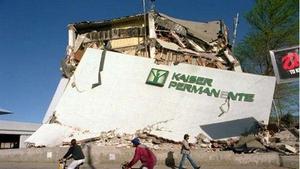Seismic risksL.A. to catalog buildings at risk of collapse during a major earthquake
After years of efforts to get officials to catalog buildings at risk of collapse during a major earthquake, Los Angeles City Council late last month instructed building officials to establish a database of such buildings. About 29,226 buildings built before 1978 are subject to survey, but city officials would use mapping programs to narrow down which structures need further field inspection. The city estimates roughly 5,800 buildings are at risk, and an additional 11,690 buildings will need inspection on site to determine whether they are soft-story buildings or not. Los Angeles has yet to decide what to do once it compiles the list, and whether to require retrofitting of vulnerable buildings, but seismic experts and policymakers insist that finding out which buildings are vulnerable is a necessary first step.

Los Angeles to catalogue quake-vulnerable buildings // Source: lanaver.com
After years of efforts to get officials to catalog buildings at risk of collapse during a major earthquake, Los Angeles City Council late last month instructed building officials to establish a database of such buildings. The survey would focus on wood frame buildings similar to the Northridge Meadows apartment complex, which killed sixteen people after it collapsed during the 1994 earthquake. “This is something we should’ve done 20 years ago,” said former councilman Greig Smith, who encouraged the survey after he was elected in 2003. “An inventory will allow you to assess what the risks are. And it hasn’t been done.”
Los Angeles has yet to decide what to do once it compiles the list, but seismic experts and policymakers insist that finding out which buildings are vulnerable is a necessary first step. “It’s so key,” said City Councilman Tom LaBonge. “You have to have the data to know how many buildings are like this and where they are. And to give us a kind of road map of what we can do to improve these buildings.”
In the 1980s, Los Angeles identified roughly 8,000 brick buildings vulnerable to collapse during an earthquake, but due to concerns about cost of retrofitting or demolishing those buildings, the city abandoned the effort. A motion introduced by LaBonge in July led building officials to develop a plan to identify the city’s “soft” story wood-frame buildings built before 1978 with at least two stories and at least five units.
The Los Angeles Times notes that soft-story structures often are built over carports and held up with slender columns, leaving the upper floors vulnerable to collapse during tremors. The city has no record of which buildings are wood-framed and soft-story, but according to a report by Ifa Kashefi, chief of the engineering bureau at the Building and Safety Department, about 29,226 buildings built before 1978 are subject to survey, but department staffers would use mapping programs to narrow down which structures need further field inspection. The city estimates roughly 5,800 buildings are at risk, and an additional 11,690 buildings will need inspection on site to determine whether they are soft-story buildings or not.
City inspectors would survey about thirty buildings each day and the complete inventory effort would take roughly fifteen to eighteen months. Funds allocated for the survey would allow the city to hire three people to assist in creating the inventory.
Mayor Eric Garcetti is expected to approve the proposal. Last year he affirmed his support for some type of mandatory retrofitting of older vulnerable buildings. Garcetti also wants to have buildings across Los Angeles to be graded for their seismic safety.
